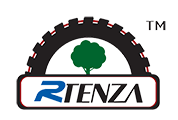Natural rubber can be divided into cigarette adhesive, standard adhesive, crepe adhesive, and latex according to different manufacturing processes and shapes.Tobacco adhesive is filtered, solidified into thin sheets by adding formic acid, dried and smoked to produce Ribbed Smoked Sheet (RSS). Most of the natural rubber imported from China is tobacco adhesive, which is generally classified according to its appearance and is divided into five levels: RSS1, RSS2, RSS3, RSS4, RSS5, etc. If it does not reach the fifth level, it is classified as an external adhesive.Standard rubber is latex that has been solidified and processed into particles. Domestic natural rubber is basically standard rubber, also known as particle rubber. Domestic standard adhesives (SCR) are generally classified according to internationally unified physical and chemical properties and indicators, which include seven items: impurity content, initial plasticity value, plasticity retention rate, nitrogen content, volatile matter content, ash content, and color index. Among them, impurity content is used as the conductivity index, and it is divided into four levels based on the amount of impurities: SCR5, SCR10, SCR20, SCR50, etc., which is equivalent to the first, second, third, and fourth level standard adhesives in China.The natural rubber available on the market is mainly made from latex from three leaf rubber trees. 91% to 94% of its components are rubber hydrocarbons, while the rest are non rubber substances such as proteins, fatty acids, ash, and sugars. Natural rubber is the most widely used universal rubber.Natural rubber is made from latex, and a portion of the non rubber components contained in latex remain in solid natural rubber. Generally, natural rubber contains 92% to 95% rubber hydrocarbons, while non rubber hydrocarbons account for 5% to 8%. Due to different production methods, origins, and even different rubber harvesting seasons, the proportion of these components may vary, but they are generally within the range.Protein can promote the vulcanization of rubber and delay aging. On the other hand, proteins have strong water absorption, which can introduce rubber to absorb moisture and mold, reduce insulation, and also have the disadvantage of increasing heat generation.Acetone extracts are some advanced fatty acids and sterols, some of which act as natural antioxidants and accelerators, while others can help disperse powdered additives during mixing and soften raw rubber.Ash mainly contains salts such as magnesium phosphate and calcium phosphate, with a small amount of metal compounds such as copper, manganese, and iron. Because these variable valence metal ions can promote rubber aging, their content should be controlled.The moisture content in dry rubber does not exceed 1% and can evaporate during processing. However, if the moisture content is too high, it not only makes the raw rubber prone to mold during storage, but also affects the processing of the rubber, such as the tendency of the compounding agent to clump during mixing; During the rolling and extrusion process, bubbles are easily generated, while during the vulcanization process, bubbles or sponge like structures are produced.
Post time: May-25-2024


